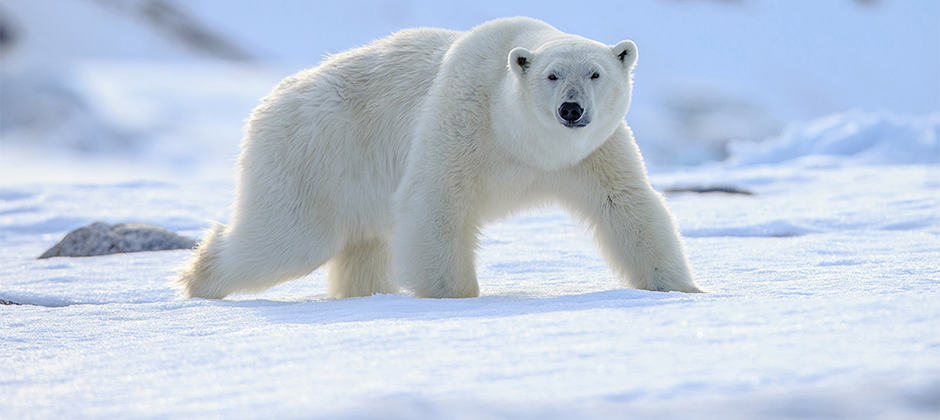Share this article
A back-end way to test polar bear toxins
Polar bears may seem a long way from civilization, but they’re vulnerable to dangerous chemicals that end up in the environment. These toxins get into the water and work their way into the food web, increasing in concentrations—or biomagnifying—until they reach polar bears (Ursus maritimus) on top.
The pollutants can cause reproductive issues and create problems with the bears’ immune and endocrine systems, which can reduce survival rates. But testing toxin levels in polar bears isn’t easy. Usually it involves sampling the tissues from a dead bear.
But by studying their feces, researchers found, they can look at live bears in a noninvasive way and get a good idea of how polychlorinated biphenlys, or PCBs, are taken up in their bodies.
“As a bear digests its prey, the tendency of chemicals to get out of the gut and into the tissues of the bear increases,” said Frank Wania, a professor at the University of Toronto-Scarborough.
For their study published in Environmental Science & Technology, Wania and PhD student Yuhao Chen turned to polar bears in the Toronto Zoo.
“With polar bears in the zoo, we know exactly how much they eat and how much they poop,” he said.
After determining the level of PCBs in the bears’ food—including fish and seal oil— and feces, they studied these samples further using a silicone film to determine how much digestion increases the tendency of the chemicals to be taken up in the bears’ tissues. Their team determined that only 2% of the PCBs taken up with the bears’ diets is excreted with the feces.
The same methods could be applied to wild polar bears, Wania said, but the results likely would be different. That’s because the zoo animals were given a much cleaner diet than the wild ringed seals they eat in the wild.
The technique also could be applied to other predatory species to help determine how effectively they take up toxins after working their way up the food web.
“There are quite a number of iconic wildlife species where biomagnification has not been studied,” he said.
Header Image:
A less invasive method can help researchers determine how toxic chemicals accumulate in polar bears.
Credit: Vaclav Sebek/Shutterstock








